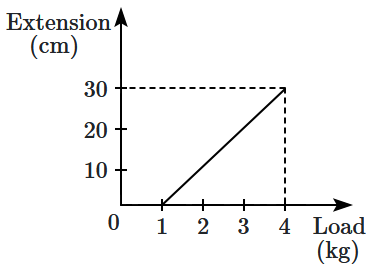An open knife edge of mass 'm' is dropped from a height 'h' on a wooden floor. If the blade penetrates upto the depth 'd' into the wood, the average resistance offered by the wood to the knife edge is
(1) mg
(2)
(3)
(4)
A body is moving along a straight line by a machine delivering constant power. The distance moved by the body in time t is proportional to
(1) t1/2
(2) t3/4
(3) t3/2
(4) t2
Two particles of masses m1 and m2 in projectile motion have velocities and respectively at time t = 0. They collide at time t0. Their velocities become and at time 2t0 while still moving in air. The value of is
1. Zero
2.
3.
4.
Consider elastic collision of a particle of mass m moving with a velocity u with another particle of the same mass at rest. After the collision the projectile and the struck particle move in directions making angles θ1 and θ2 respectively with the initial direction of motion. The sum of the angles. θ1 + θ2, is
(1) 45°
(2) 90°
(3) 135°
(4) 180°
The relationship between force and position is shown in the given figure (in a one-dimensional case). The work done by the force in displacing a body from \(x = 1~\text{cm}\) to \(x = 5~\text{cm}\) is:

1. \(20~\text{ergs}\)
2. \(60~\text{ergs}\)
3. \(70~\text{ergs}\)
4. \(700~\text{ergs}\)

1. \(0.1\text{ N/cm}\)
2. \(5\text{ N/cm}\)
3. \(0.3\text{ N/cm}\)
4. \(1\text{ N/cm}\)
Adjacent figure shows the force-displacement graph of a moving body, the work done in displacing body from x = 0 to x = 35 m is equal to-
(1) 50 J
(2) 25 J
(3) 287.5 J
(4) 200 J
A 10kg mass moves along x-axis. Its acceleration as a function of its position is shown in the figure. What is the total work done on the mass by the force as the mass moves from x = 0 to x = 8 cm ?
(1) 8 × 10–2 joules
(2) 16 × 10–2 joules
(3) 4 × 10–4 joules
(4) 1.6 × 10–3 joules
A toy car of mass 5 kg moves up a ramp under the influence of force F plotted against displacement x. The maximum height attained is given by


1. ymax = 20 m
2. ymax = 15 m
3. ymax = 11 m
4. ymax = 5 m
The graph between the resistive force \(F\) acting on a body and the distance covered by the body is shown in the figure. The mass of the body is \(25\) kg and the initial velocity is \(2\) m/s. When the distance covered by the body is \(4\) m, its kinetic energy would be:
1. \(50\) J
2. \(40\) J
3. \(20\) J
4. \(10\) J









